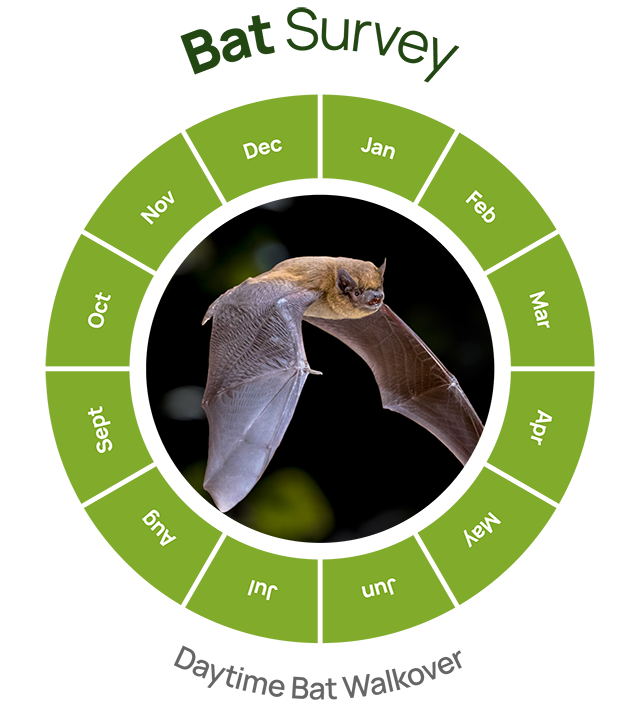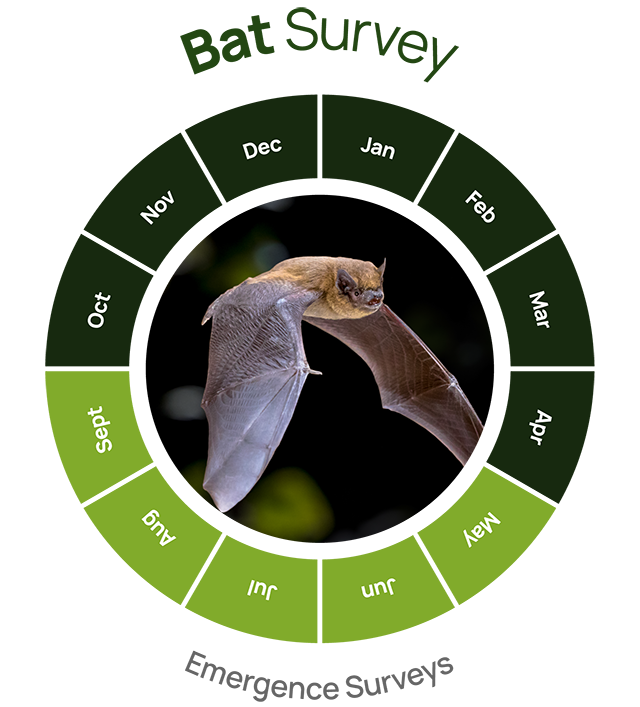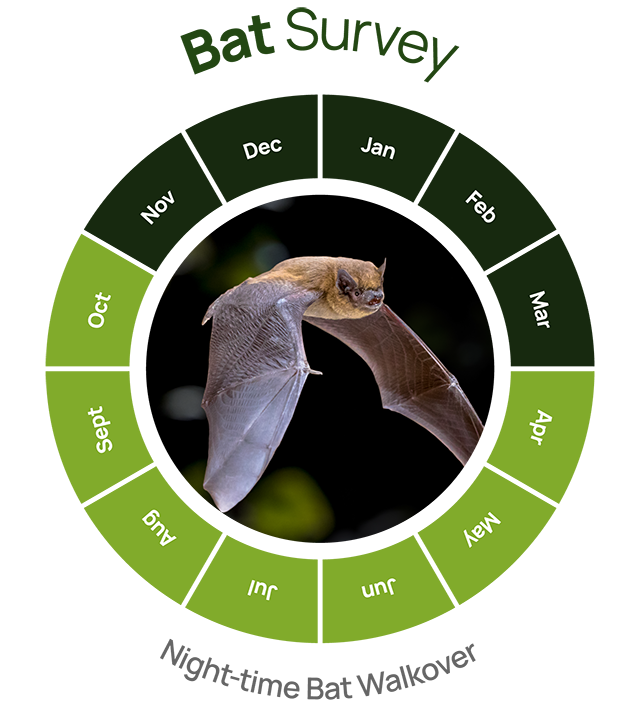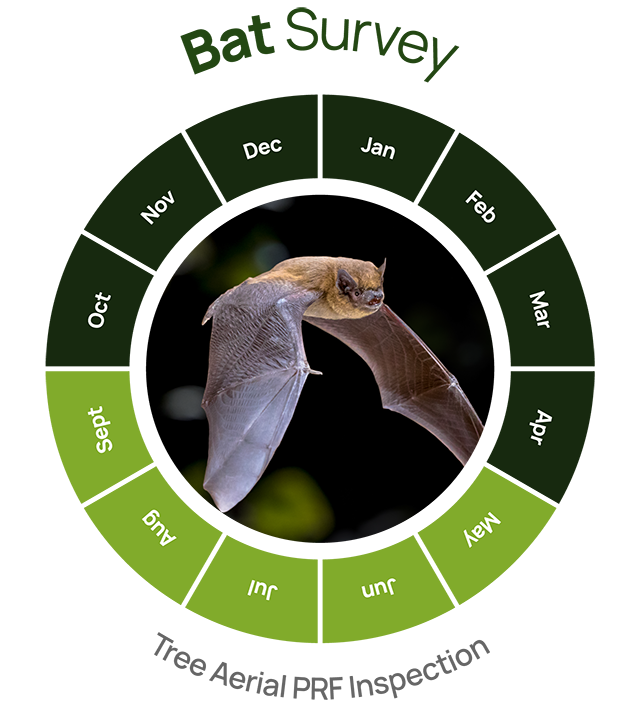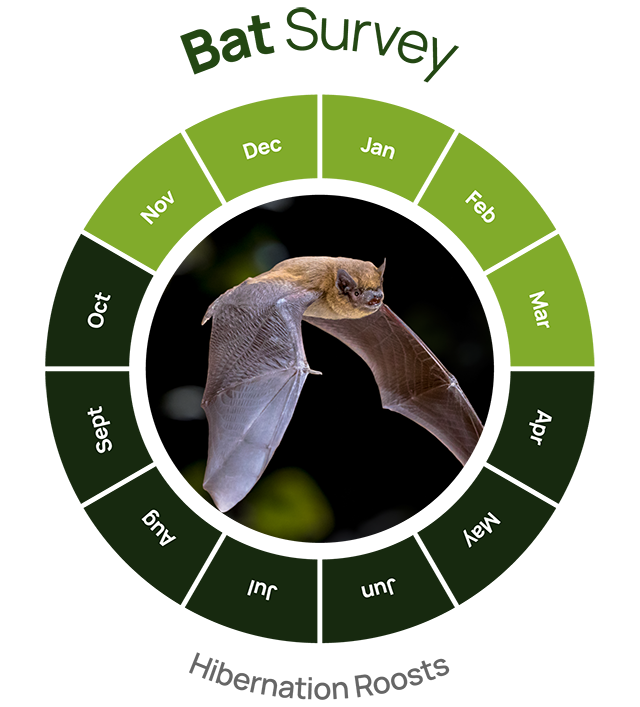Bat Survey
If you are planning a development project that is at risk of disturbing or damaging a bat roost, you will need to conduct a daytime bat walkover (DBW) and preliminary roost assessment followed by bat surveys.
Bat Survey services from licensed ecologists.
Ecology by Design prides itself on its experience and expertise in bat consultancy services including bat roost surveys of buildings and activity surveys of landscapes. Using the latest technology and our years’ of experience, we will carry out the necessary scoping surveys on your site, to determine the presence of bats. We will work with you to design appropriate mitigation and provide you with clear, concise reports to submit with your planning application. Once planning permission has been granted, we can apply for a bat mitigation licence (if required) allowing your project to progress legally.
Why and when do you need a bat survey?
There are 18 species of bat in the UK (17 breeding). Bats are legally protected because they show a steady decline in numbers largely due to the loss of high-quality habitats and the conversion of buildings traditionally used by bats such as barns.
If there is any risk of encountering roosting bats or altering their foraging or commuting habitats through your development proposals, then you will need a survey. This is to understand how bats are using your site, the species and numbers present, the types of roost and how your project can legally progress, whilst protecting the bats.
Bats can be affected by construction works including:
- Barn /loft conversions
- Demolishing buildings
- Re-roofing
- Listed building repairs
- Building and maintenance of roads
- Tree removal
- Hedgerow removal
- Extensions blocking roof access
- Wind turbines
- Sports field lighting
What does a bat survey entail?
Bat surveys follow a process of different surveys depending whether evidence of, or potential for bats is identified.
The first step is called a daytime bat walkover (DBW) and preliminary roost assessment (PRA). This survey includes a physical inspection of a potential bat feature such as a building, bridge or other structure, as well as the surrounding landscape. How bats might use the habitats on and around the site will also be taken into account.
If bats or the potential for bats is identified and the works might cause disturbance, further survey work will be recommended which is normally in the form of emergence/ re-entry surveys. These surveys are conducted at night and involve surveyors recording bats entering or emerging from a feature on the structure.
For buildings or structures with the potential to support hibernating bats, then surveys to determine whether bats are hibernating must also be carried out.
Sites with trees that could be impacted will need a preliminary ground level roost assessment to assess each tree (or groups of trees). If features are identified that have potential for bats, additional off the ground surveys must be undertaken to physically inspect each feature.
For sites that offer known or potentially suitable foraging habitats or commuting features where there would be a significant impact, for example the removal of hedgerows or changes in lighting, activity surveys will be needed.
Other surveys can also be undertaken but are very specialist and specific to certain situations such as trapping using nets, radio tagging and backtracking.
Bat Survey Timing
Aim to carry out a daytime bat walkover (DBW) which is the initial part of a bat survey, as early as possible in terms of your project timeline, ideally as soon as you know you want to put in a planning application! A DBW can be undertaken at any time of year. If further surveys are recommended as a result of the DBW, bat activity will need to be surveyed over an extended period, often spanning months at a time. They will need to start no earlier than May and end in September.
Bat Licence Application and Mitigation.
What happens if a bat roost is identified and the scheme can’t be amended to remove impacts on bats?
Mitigation may be required to mitigate for the loss, disturbance or modification of a roosting site.
Licences and mitigation can range widely in price and the amount of input required depending on the impact, species of bat and budget. Schemes may include the installation of bat boxes either inside or retrofitted externally to a building or tree. In a high impact situation, this could involve the construction of a building or roof feature designed for bats. Licenced ecologists would also be required to be on site to oversee soft stripping by hand of bat features to be removed under licence, to ensure protection and safe translocation of any bats discovered.
We have never had a mitigation scheme refused and work hard with our clients to provide cost effective solutions that can be implemented within their scheme.
What does a hibernating bat survey entail?
This involves two physical checks (where possible) in the coldest months and deployment of static detectors to detect bat calls over multiple days and nights each month from November to March.
